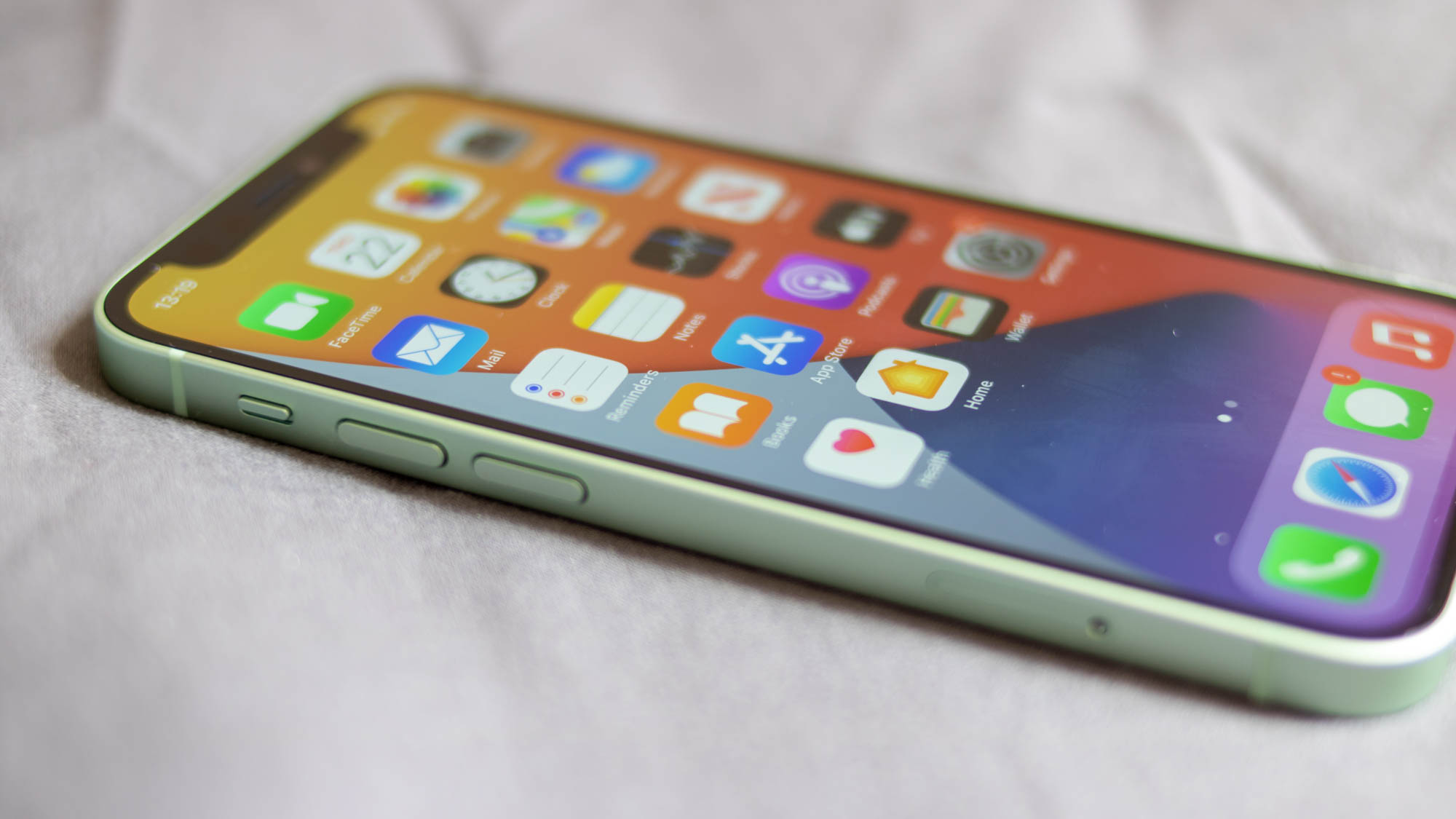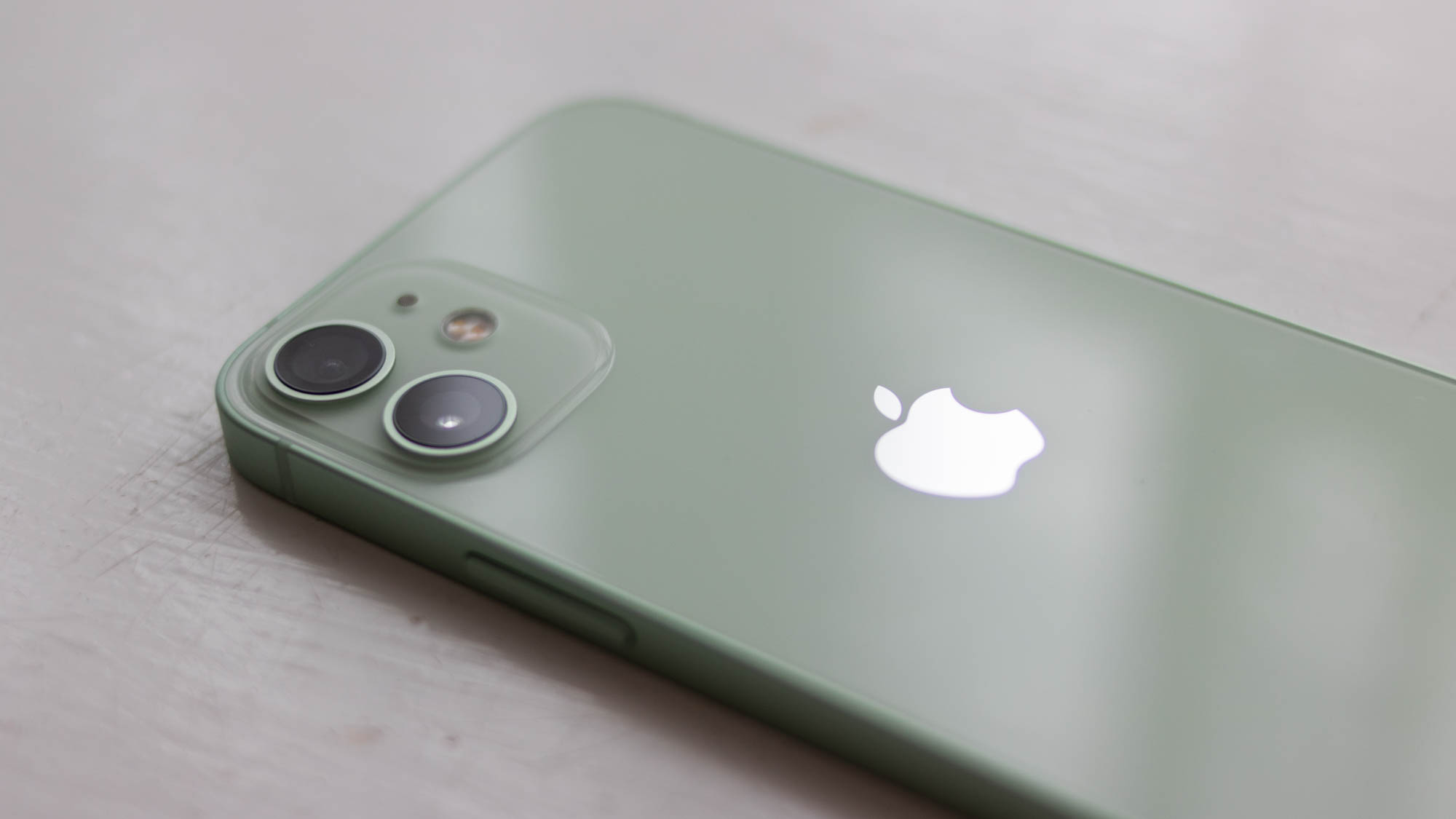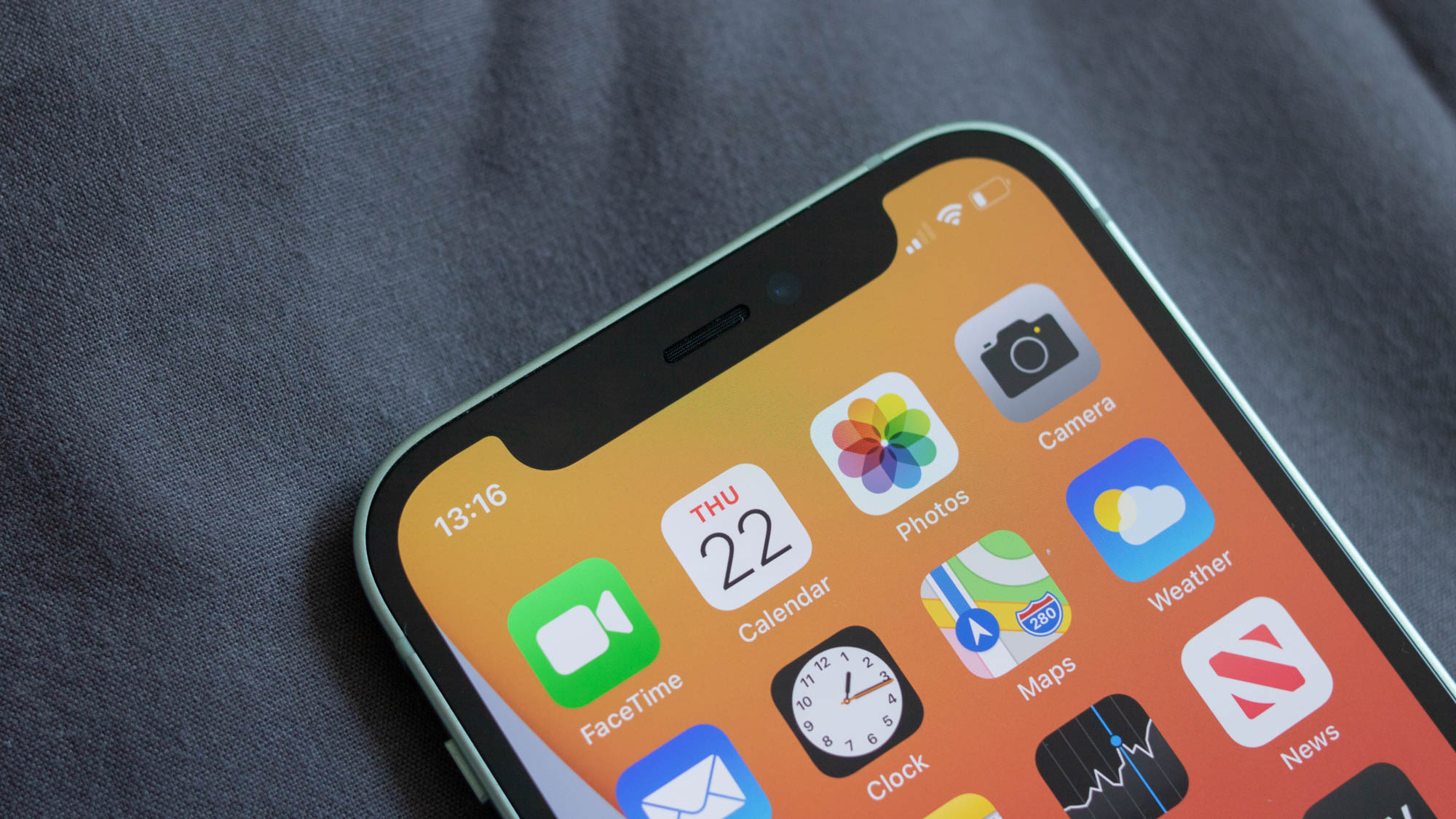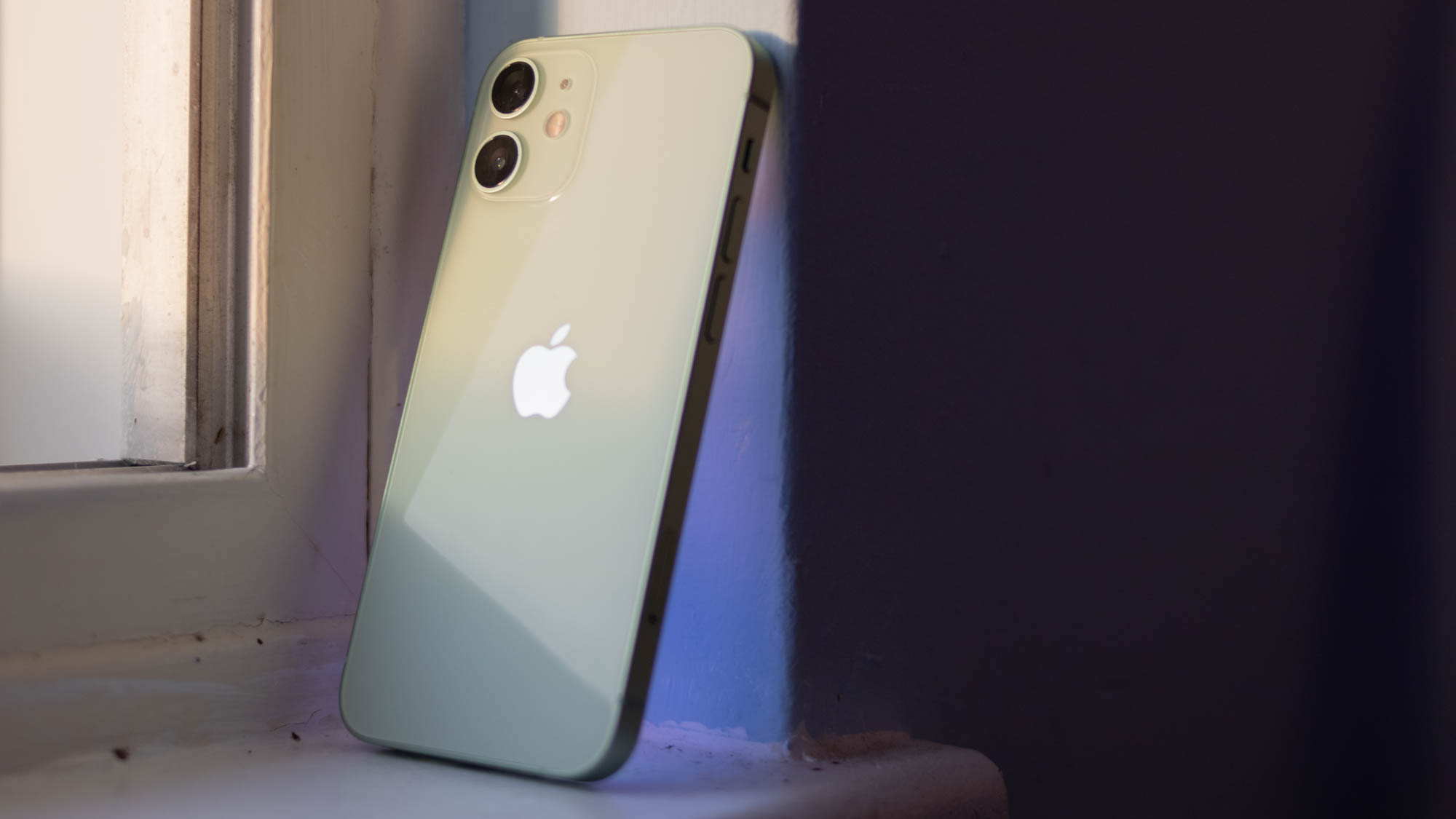iPhone 12 mini review: Mini phone, major fun
It’s the tiniest iPhone available, but it certainly isn’t short on power
-
+
High powered
-
+
Colourful display
-
+
Fun design
-
-
Underwhelming battery life

The smartphone industry is full of ‘Ultra’, ‘Plus’ and ‘Pro’ handsets, so when Apple launched a 5.4in iPhone 12 mini, it felt like a breath of fresh air. In a world where companies make phones that fold out into tablets, Apple surprised us all with a fun miniature.
Essentially, it’s an iPhone 12 that’s been shrunk and to do that Apple has had to make two distinct compromises: a smaller display and a smaller battery. In every other facet, it’s an exact replica that costs around £100 less.
iPhone 12 mini review: Design
For context, the mini is even smaller than the 2020 iPhone SE at just 131.5mm tall and 64.2mm wide. It does have the same 7.4mm thickness as the standard iPhone 12, presumably because of the 5G components it’s had to cram in. There is an argument for leaving 5G out of the mini, making it even smaller and cheaper, but this is probably the smallest a 5G-enabled phone could realistically be.
The overall design is fun and harks back to the iPhone 5c with its spectrum of pretty colours: Blue, Green, Black, White, (Product)Red and the newly released Purple. It’s encircled by useful flat aluminium rails that allow the handset to stand up on its own and the corners are neatly rounded. Unlike the iPhone 11, which seemed to follow other manufacturers with rounded side rails, the iPhone 12 range has a strong identity and a more original look - albeit one that’s rather retro-inspired.
What’s more, Apple claims it’s four times more drop-resistant than the 11 as the screen is made with Corning’s Ceramic Glass. This is a compound of ceramic crystals said to make it tougher and more scratch-resistant than anything that has gone before it.

iPhone 12 mini review: Display
The first of the mini’s two compromises is its display. And by that, we mean that it’s only 5.4in; in every other regard, it’s still of high quality and also supports HDR10. It has an AMOLED display with a 1,080 x 2,340 resolution and a pixel density of 476ppi. The standard 12’s screen is also AMOLED, but it has a higher 2,532 x 1,170 resolution. To the naked eye, there doesn’t seem to be much of a contrast but there is a slight drop in quality that can be picked up with a calibrator.
In our tests, the mini showcased a 94.2% coverage of the sRGB colour space. This was a little less than the standard iPhone 12, but not enough to really suggest one is better than the other. And that same score holds up well compared to other displays, such as Sony’s Xperia 5ii, which scored slightly higher. The mini’s display also packs a massive punch of brightness, peaking at 537cd/m2.
Those scores backed up our impressions of the mini, namely that it’s bright, bold and beautiful. However, as with the standard and the Max Pro iPhones, the mini’s display has one annoying fault: a big moustache of a notch along the top. This is where facial recognition and other sensors are housed. Other manufacturers have managed to integrate them in ways that free the top of the display and it’s perplexing that Apple can’t do the same.
iPhone 12 mini review: Specs and Performance
The mini may be the smallest of the iPhone 12 range, but that doesn’t mean reduced performance. This year’s iPhones have come with the Apple A14 Bionic chipset, developed with a 5nm process which essentially enables more power to run through a smaller space.
Unsurprisingly, the mini is fast. Comparing GeekBench 5 scores, the mini notched up 1,588 for single-threaded performance and 4,141 for multi-threaded. These were almost identical to the standard iPhone 12’s scores of 1,591 and 4,053, respectively. If you need proof that size isn’t everything, it also offered better GeekBench scores than the Samsung Galaxy S21 Ultra, which only managed 3,549 for multi-threaded performance.

The mini only comes with 4GB of RAM, which is a bit of a regular quirk of iPhones. The standard 12 also comes with 4GB, as did the iPhone 11. It doesn’t necessarily affect performance and it is common on smaller phones, but it is worth noting that the iPhone X only had 3GB. So this is actually a ‘bonus’ if you’re still rocking that model.
iPhone 12 mini review: Battery life
To create a mini iPhone that still has 5G components, Apple has had to find space somewhere. As such, the mini has a smaller-than-average 2,227mAh power source. The standard iPhone 12 had a slightly bigger 2,815mAh battery and in our looped video test, it lasted 16hrs 12mins. That wasn’t a particularly strong score and the mini, with its smaller battery, lasted almost an hour less at 15hrs 16mins. In comparison, Google’s cheaper Pixel 5 lasted over 22hrs.
Those tests are admittedly intensive, but it does highlight the biggest flaw the mini has. Battery life is limited by the size of the power source and in the case of the mini, possibly made worse by the stronger processor. In real terms, we found the mini needed charging by the early evening and by late afternoon if we used it heavily. This is, unfortunately, the price you pay for the smallest iPhone.
iPhone 12 mini review: Features
Should you opt for a mini iPhone, you’ll get largely the same features as the 12 and 12 Max Pro. That includes 5G, which has finally been embraced by Apple (took’ em long enough). However, that might not be a solid enough reason to upgrade to any of the 12 models, as yet. Until the network providers can fully implement 5G around the country, it isn’t necessarily going to be useful on your phone - particularly if you live in a rural area.
What is useful is iOS 14.5, which can now be installed on the mini. When the handsets were launched in November there was an issue with the facial recognition software struggling to identify users in face masks. The problem was exacerbated with the lack of a fingerprint sensor and, of course, the never-ending need to cover your face. But iOS 14.5 has solved this issue and it does open while masked up - though it does take a second or two longer.

The only other feature-related issue with the mini is thanks to its 5.4in display, which makes it a little awkward to use. The keypad, for instance, is just too compact for the average adult thumb. You can’t help but hit the wrong letters and numbers when you try and type at speed. The experience is even worse when you open up a document or a spreadsheet, where it becomes a complex mess of expanding and scrolling. There are many plus points to the mini, but very few of them are work-related.
However, one of the most intriguing features of the new iPhone range is MagSafe, Apple’s magnetic accessory ecosystem. This includes a wireless charging pad, a wallet that sticks to your handset and a few other innovative ideas. It’s still in its infancy, but definitely worth keeping tabs on as more third-party companies bring their ideas to market.
iPhone 12 mini review: Camera(s)
The mini comes with two rear camera lenses; a 12MP, f/1.6 wide lens and a 12MP, f/2.4 ultrawide one - plus a 12MP f/2.2 selfie cam. These may be the same number and resolution of lenses that the 11 had, but their performance and capabilities will be greater due to that A14 Bionic chipset.
For example, there’s Deep Fusion technology, where machine learning is used to process pixels for clearer images. This has made major improvements to the portrait mode and the night mode. The latter is also aided by a wider aperture which is able to extract more details in low light settings.
These advancements are mainly down to the new chipset and probably enough to overlook the lack of a telephoto lens. It simply means you can’t capture images from miles away on an iPhone and it isn’t necessarily that useful anyway. However, what is available is certainly an improvement on the iPhone 11 and arguably the best camera specs on a phone this small.

iPhone 12 mini review: Verdict
It is hard not to love the iPhone 12 mini; it’s a fun and refreshing break from all those massive phablets that seek to dislocate your thumb joint. However, the poor battery life is an issue - particularly if you’re a heavy user - and the handset is still quite expensive at £699. You can get the Pixel 5 for £100 less, and that’s without mentioning the likes of Oppo or Xiaomi.
The fact that the 12 mini hasn’t been dumbed down and still has that A14 Bionic chipset does make this a pretty special package, though. Many people want smaller smartphones, but not necessarily with less performance or lower specs, and Apple has the perfect answer to that, with its marvellous mini iPhone 12.
The iPhone 12 mini is available for £47 per month with an upfront cost of £29 on the Vodafone network
iPhone 12 mini Specifications
| Processor | Apple A14 Bionic (5nm) |
| RAM | 4GB |
| Screen size | 5.4in |
| Screen resolution | 1,080 x 2,340 pixels, 20:9 ratio |
| Pixel density | 476ppi |
| Screen type | OLED, HDR10 |
| Front camera | 12MP, f/2.2 |
| Rear camera | 12MP, f/1.6, 12MP, f/2.4 |
| Dust and water resistance | IP68 |
| 3.5mm headphone jack | No |
| Wireless charging | Yes |
| Connection type | Lightning |
| Storage options | 65GB, 128GB, 256GB |
| Memory card slot | No |
| Bluetooth | 5.2 |
| NFC | Yes |
| Cellular data | Yes |
| Dual SIM | No |
| Dimensions (WDH) | 131.5 x 64.2 x 7.4 mm |
| Weight | 135g |
| Operating system | iOS 14.1 |
| Battery size | 2,227 mAh |
Get the ITPro daily newsletter
Sign up today and you will receive a free copy of our Future Focus 2025 report - the leading guidance on AI, cybersecurity and other IT challenges as per 700+ senior executives
Bobby Hellard is ITPro's Reviews Editor and has worked on CloudPro and ChannelPro since 2018. In his time at ITPro, Bobby has covered stories for all the major technology companies, such as Apple, Microsoft, Amazon and Facebook, and regularly attends industry-leading events such as AWS Re:Invent and Google Cloud Next.
Bobby mainly covers hardware reviews, but you will also recognize him as the face of many of our video reviews of laptops and smartphones.
-
 ‘Phishing kits are a force multiplier': Cheap cyber crime kits can be bought on the dark web for less than $25 – and experts warn it’s lowering the barrier of entry for amateur hackers
‘Phishing kits are a force multiplier': Cheap cyber crime kits can be bought on the dark web for less than $25 – and experts warn it’s lowering the barrier of entry for amateur hackersNews Research from NordVPN shows phishing kits are now widely available on the dark web and via messaging apps like Telegram, and are often selling for less than $25.
By Emma Woollacott Published
-
 Redis unveils new tools for developers working on AI applications
Redis unveils new tools for developers working on AI applicationsNews Redis has announced new tools aimed at making it easier for AI developers to build applications and optimize large language model (LLM) outputs.
By Ross Kelly Published
-
 Google layoffs continue with "hundreds" cut from Chrome, Android, and Pixel teams
Google layoffs continue with "hundreds" cut from Chrome, Android, and Pixel teamsNews The tech giant's efficiency drive enters a third year with devices teams the latest target
By Bobby Hellard Published